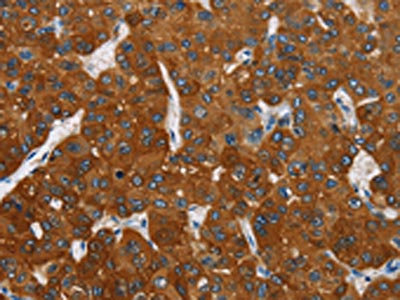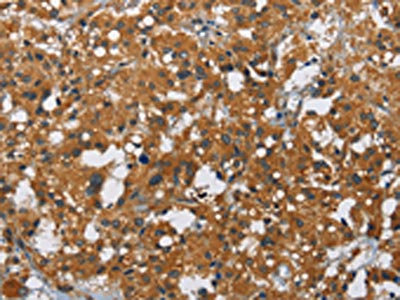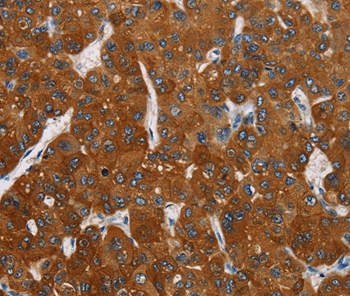
The image on the left is immunohistochemistry of paraffin-embedded Human liver cancer tissue using CSB-PA233585(CARD9 Antibody) at dilution 1/70, on the right is treated with fusion protein. (Original magnification: x200)
CARD9 Antibody
CSB-PA233585
ApplicationsELISA, ImmunoHistoChemistry
Product group Antibodies
ReactivityHuman
TargetCARD9
Overview
- SupplierCusabio
- Product NameCARD9 Antibody
- Delivery Days Customer20
- ApplicationsELISA, ImmunoHistoChemistry
- CertificationResearch Use Only
- ClonalityPolyclonal
- ConjugateUnconjugated
- Gene ID64170
- Target nameCARD9
- Target descriptioncaspase recruitment domain family member 9
- Target synonymsCANDF2, IMD103, hCARD9, caspase recruitment domain-containing protein 9, caspase recruitment domain protein 9
- HostRabbit
- IsotypeIgG
- Protein IDQ9H257
- Protein NameCaspase recruitment domain-containing protein 9
- Scientific DescriptionThe protein encoded by this gene is a member of the CARD protein family, which is defined by the presence of a characteristic caspase-associated recruitment domain (CARD). CARD is a protein interaction domain known to participate in activation or suppression of CARD containing members of the caspase family, and thus plays an important regulatory role in cell apoptosis. This protein was identified by its selective association with the CARD domain of BCL10, a postive regulator of apoptosis and NF-kappaB activation, and is thought to function as a molecular scaffold for the assembly of a BCL10 signaling complex that activates NF-kappaB. Several alternatively spliced transcript variants have been observed, but their full-length nature is not clearly defined.
- ReactivityHuman
- Storage Instruction-20°C or -80°C
- UNSPSC41116161






